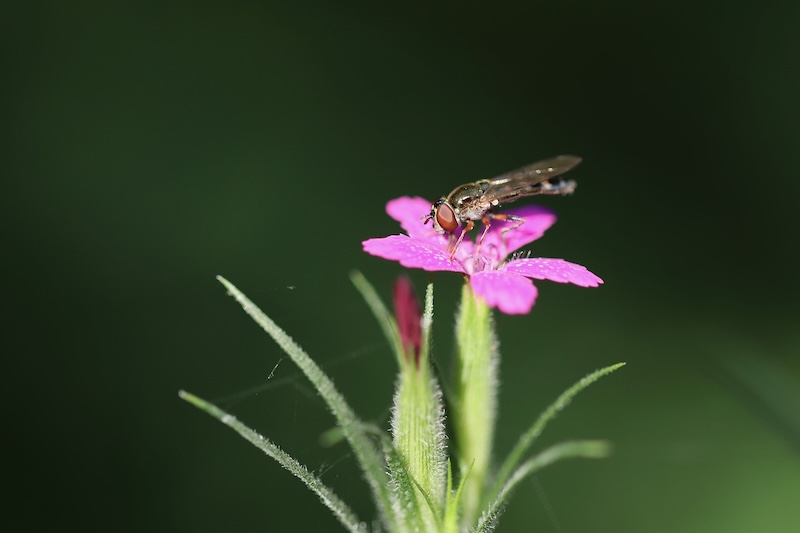The delicate, frilly flowers of Dianthus bloom from spring to early summer. Some cultivars have a second flush of flowers later in the season for an added burst of color. Dianthus plants are generally easy to maintain. Pests are seldom an issue, but they can damage stressed or young plants. Catching an infestation early is best and can prevent larger-scale issues. Learn to spot the signs of pests and how to treat a Dianthus infested with bugs.

Common Dianthus Pests
Aphids
Aphids are tiny, sap-sucking insects that can cause a lot of damage to Dianthus. These pests eat the sap that carries nutrients through the plant. Infested plants have curling and discolored foliage. Heavily infested plants will be covered in a sticky substance known as honeydew, the waste produced by aphids. An aphid infestation can cause stunted growth and even kill a plant.
Treating Aphids on Dianthus
Remove heavily damaged sections of a Dianthus. Pruning the damage will help the plant recover and direct energy into new growth. Further, treat an aphid infestation on Dianthus plants by spraying the foliage with insecticidal soap. The soap will kill adult aphids, larvae, and eggs. Reapply the insecticidal soap every couple of weeks to continue to treat the Dianthus.
Preventing Aphids on Dianthus
The best aphid prevention is to keep your plant healthy. Make sure the plant gets regular deep watering sessions during the growing season. Avoid overfertilizing, which can stimulate excess tender growth, susceptible to aphid damage. Encourage beneficial predatory insects into your garden by planting a host of native blooming plants. Proactively spray a plant with insecticidal soap if aphids are rampant in your garden. Routinely inspect the plant for bugs or signs of pests, including damage.
Slugs
Slugs are a type of mollusk that can devour foliage and flowers. These pests eat vegetation, leaving irregular-shaped holes along the edges or within the leaves. Other signs of slugs include a slimy, mucus-like trail that these pests leave in their wake.

Treating Slugs on Dianthus
Remove slugs by hand to prevent further damage. Slugs often emerge in the evening when the temperatures are cool or after a rainstorm. For a hands-off treatment, try filling a saucer with beer and placing it near the Dianthus. The slugs will be drawn to the beer and drown.
Preventing Slugs on Dianthus
Prevent a slug infestation by leaving adequate space between plants and removing debris like dead leaves and branches from around the base of the plant. Removing debris will eliminate places for the slugs to hide out. Another method to prevent slugs is to sprinkle slug deterrent pellets around the plant. It uses iron phosphate to bait slugs, which is safe to use around pets and wildlife.
Dianthus Pests Chart
|
Pest |
Identifying |
Treating |
|
Aphids |
Tiny, soft-bodied insect, pear-shaped bodies, long antennae |
Remove and prune heavily damaged sections of a Dianthus |
|
Slugs |
Slimy, mucus-like trail |
Remove slugs by hand, fill a saucer with beer and place it near the Dianthus |
Sources: "Carnation, Pinks (Dianthus)." The Connecticut Agricultural Experiment Station. portal.ct.gov
 |
Author Alison Cotsonas - Published 12-21-2023 |
